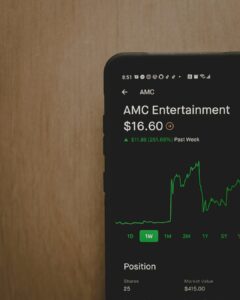Using Forex Bollinger Band Strategies to Identify Market Trends
The foreign exchange market, commonly known as forex, is the largest and most liquid financial market in the world. Traders and investors from all around the globe participate in this market, buying and selling currencies to profit from the fluctuations in exchange rates. With the volatility of the forex market, it is crucial for traders to have effective strategies to identify market trends and make informed trading decisions.
One popular tool among forex traders is the Bollinger Bands. Developed by John Bollinger in the 1980s, Bollinger Bands are a widely used technical analysis tool that helps identify volatility and potential price reversals. Bollinger Bands consist of three lines plotted on the price chart, with the middle line representing the 20-day simple moving average (SMA) and the upper and lower lines representing two standard deviations away from the SMA.
The first step in using Bollinger Bands to identify market trends is to understand the concept of volatility. Volatility refers to the degree of price fluctuation in a currency pair. Higher volatility indicates larger price swings, while lower volatility indicates smaller price movements. Bollinger Bands expand and contract based on market volatility, making them an excellent tool for identifying periods of high and low volatility.
When the price is in a trending market, Bollinger Bands can help traders identify the direction of the trend and potential reversal points. During an uptrend, the price tends to stay above the middle line (20-day SMA) and may touch or exceed the upper line (two standard deviations away from the SMA). Conversely, during a downtrend, the price tends to stay below the middle line and may touch or exceed the lower line.
Traders can use Bollinger Bands to identify potential entry and exit points. When the price touches the upper band, it may indicate an overbought condition, suggesting a potential reversal or pullback. Similarly, when the price touches the lower band, it may indicate an oversold condition, suggesting a potential reversal or bounce back.
However, it is important to note that Bollinger Bands alone should not be the sole basis for making trading decisions. Traders should consider other technical indicators, such as oscillators or momentum indicators, to confirm the potential reversal signals generated by Bollinger Bands.
Another way to use Bollinger Bands is to spot periods of low volatility, which often precede significant price movements. When the bands contract, it indicates that the market is in a consolidation phase, with prices moving in a tight range. Traders can anticipate a breakout from this consolidation phase by monitoring the width of the Bollinger Bands. A breakout above the upper band suggests a potential bullish move, while a breakout below the lower band suggests a potential bearish move.
To further enhance the effectiveness of Bollinger Bands, traders can combine them with other technical analysis tools and indicators. For example, using Bollinger Bands in conjunction with trend lines or moving averages can provide additional confirmation of market trends and potential reversal points.
In conclusion, Bollinger Bands are a valuable tool for forex traders to identify market trends and potential reversal points. By understanding the concept of volatility and monitoring the price’s interaction with the upper and lower bands, traders can make more informed trading decisions. However, it is essential to combine Bollinger Bands with other technical indicators to confirm potential signals and avoid false trading signals. With practice and experience, traders can harness the power of Bollinger Bands to improve their trading strategies and increase their chances of success in the forex market.





